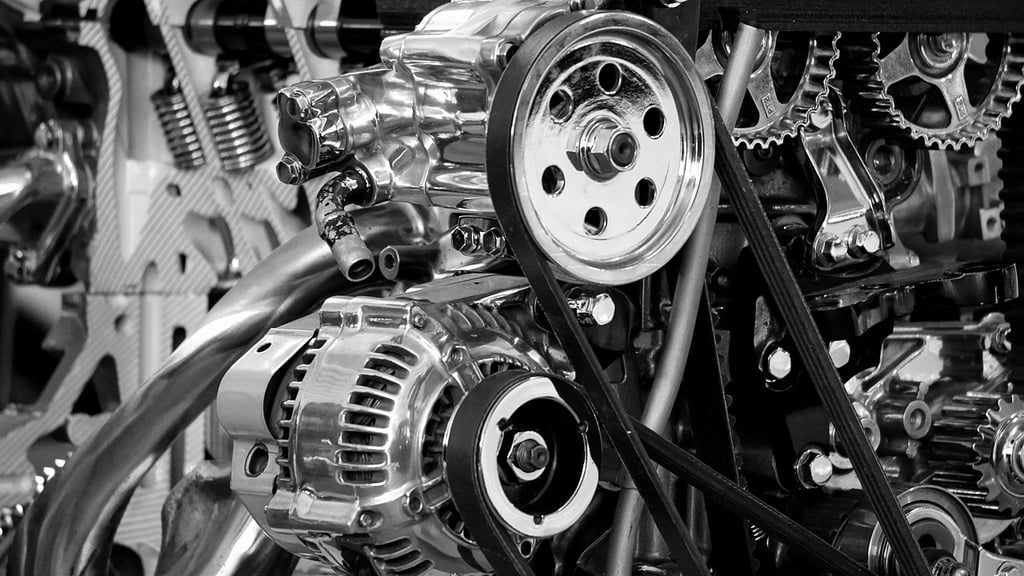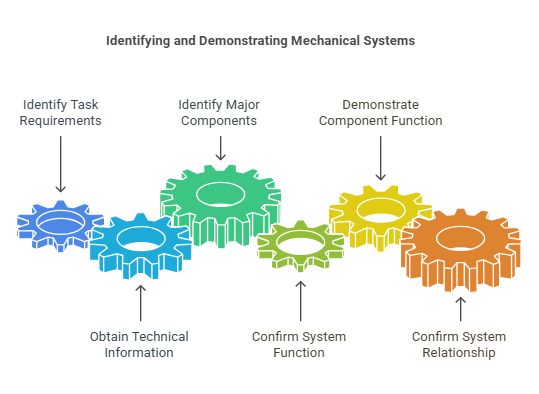Understanding Workplace Activities for Identifying Automotive Mechanical Systems and Components
Posted by SkillMaker in Mar, 2025
What is a concise description of activities when identifying automotive mechanical systems and components?

In the Australian automotive industry, identifying mechanical systems and components involves systematically evaluating various parts of a vehicle’s structure and function. This includes understanding the engine, transmission, braking, suspension, steering, and electrical systems, ensuring proper diagnosis, maintenance, and repair.
Listen to this article as a podcast
Why do people in the Automotive industry need to engage in workplace activities when identifying automotive mechanical systems and components?
Professionals in the automotive industry must engage in these activities to ensure vehicles are correctly diagnosed and maintained, providing safety and reliability for drivers and passengers. Correct identification prevents costly repairs and enhances customer trust, ensuring regulatory compliance and environmental standards are met.
“Identifying mechanical systems and components is essential for vehicle safety, reliability, and customer satisfaction, laying the groundwork for effective maintenance and repair.”
What are the key components or elements of activities related to identifying automotive mechanical systems and components?
Key components include:
- Engine Systems: Identifying components like pistons, cylinders, and crankshafts.
- Transmission Systems: Examining gearboxes, clutches, and differentials.
- Braking Systems: Understanding calipers, pads, discs, and hydraulic lines.
- Suspension and Steering: Recognizing shocks, struts, and steering linkages.
- Electrical Systems: Identifying wiring, batteries, and alternators.
What key terms, with descriptions, relate to identifying automotive mechanical systems and components?

Registered Trademark®
- Piston: Component in an engine that moves up and down inside a cylinder.
- Differential: Gear system that divides engine torque between the wheels.
- Caliper: Part of the brake system that squeezes brake pads against discs.
- Alternator: Device generating electrical energy, charging the vehicle’s battery.
- Strut: Component of the suspension system providing structural stability.
Who is typically engaged with operating or implementing activities for identifying automotive mechanical systems and components?
Automotive technicians, mechanics, and service advisors typically engage in identifying mechanical systems and components. They work collaboratively to diagnose issues accurately, enhance service quality, and ensure customer satisfaction.
How do workplace activities for identifying automotive mechanical systems align or integrate with other components of the Automotive Industry in Australia?

These activities are integral to maintenance, repair, and advancement in automotive technologies. They ensure vehicles meet safety and efficiency standards, supporting overall industry innovation and sustainability initiatives, crucial to Australia’s automotive sector.
Where can the student go to find out more information about activities for identifying automotive mechanical systems and components?
What job roles would be knowledgeable about activities for identifying automotive mechanical systems and components?
Roles include:
- Automotive Technicians
- Service Advisors
- Automotive Mechanics
- Vehicle Inspectors
- Apprentice Motor Mechanics
What are activities for identifying automotive mechanical systems like in relation to sports, family, or schools?

In sports, identifying automotive systems reflects a coach developing strategies by analysing team dynamics and individual roles.
Within a family, it’s similar to understanding each member’s strengths and responsibilities to ensure household harmony.
In schools, it compares to evaluating student progress and needs to tailor educational approaches for optimal learning outcomes.
(The first edition of this post was generated by AI to provide affordable education and insights to a learner-hungry world. The author will edit, endorse, and update it with additional rich learning content.)
(Skillmaker – 2025)

 Post Tagged with
Post Tagged with